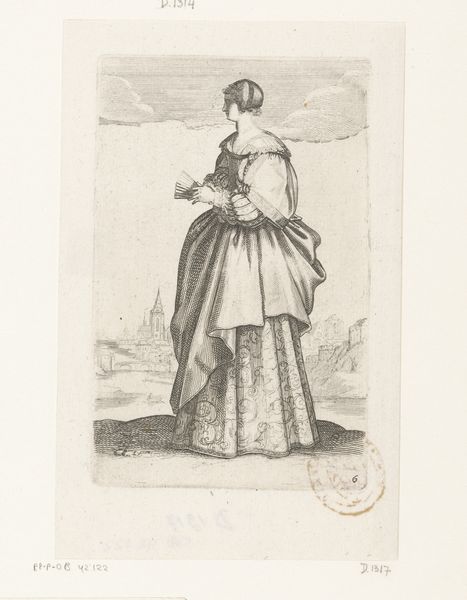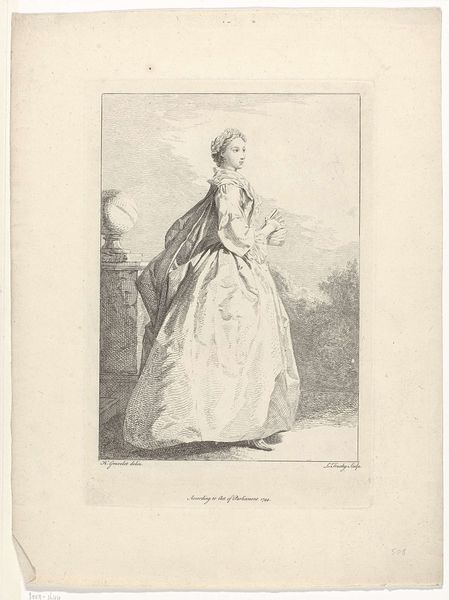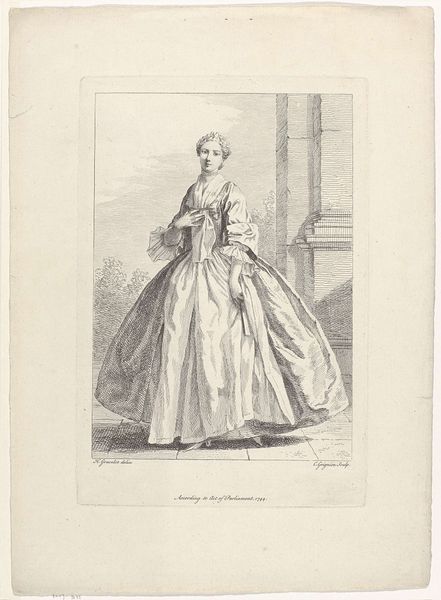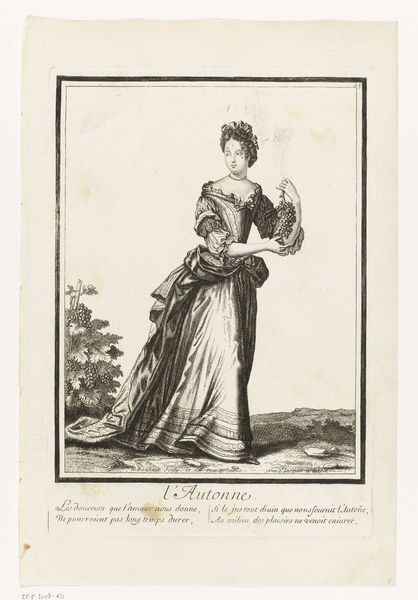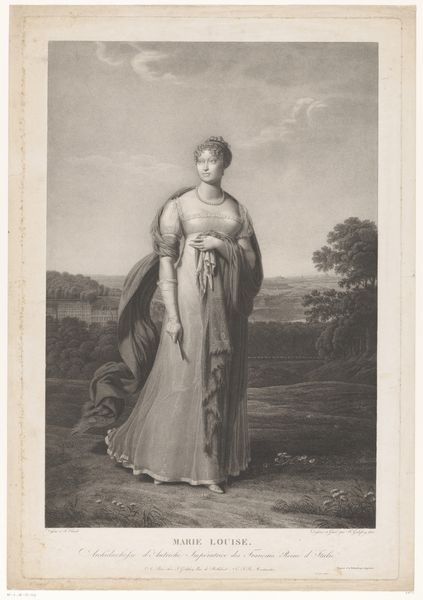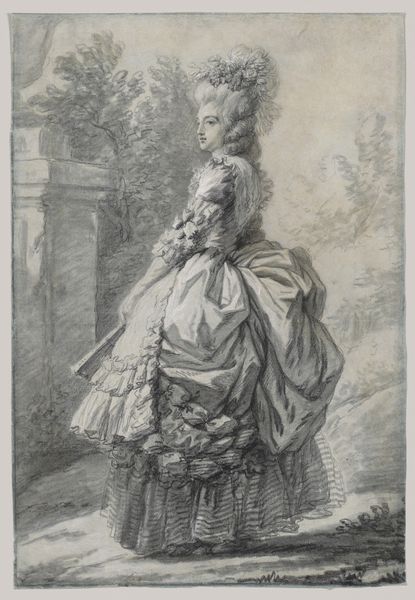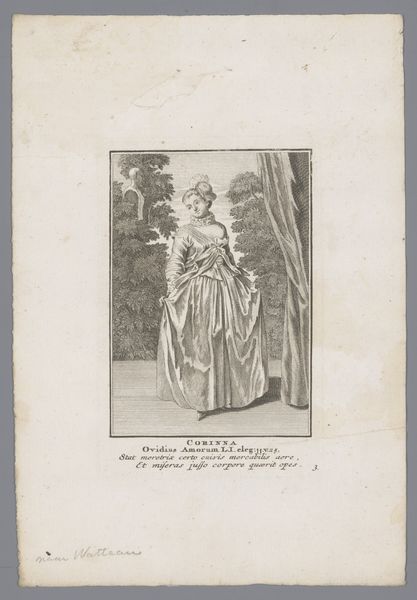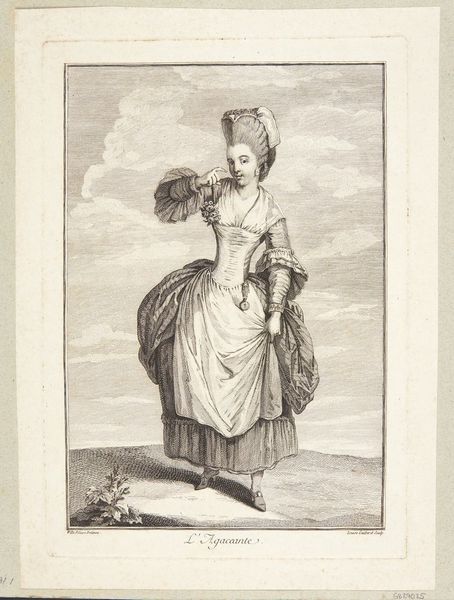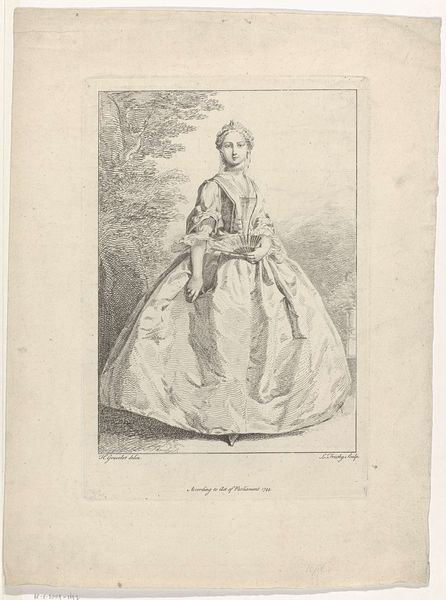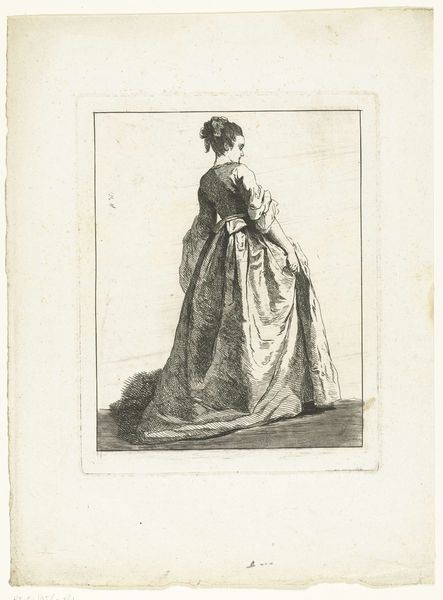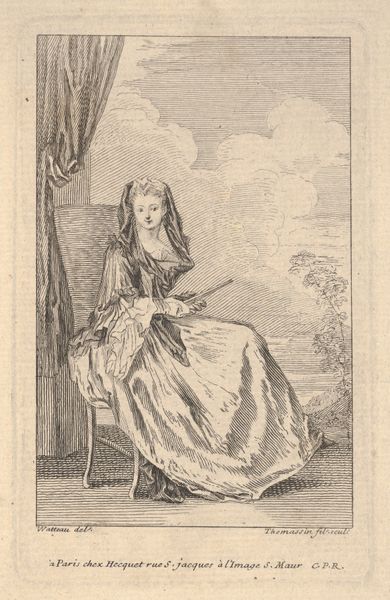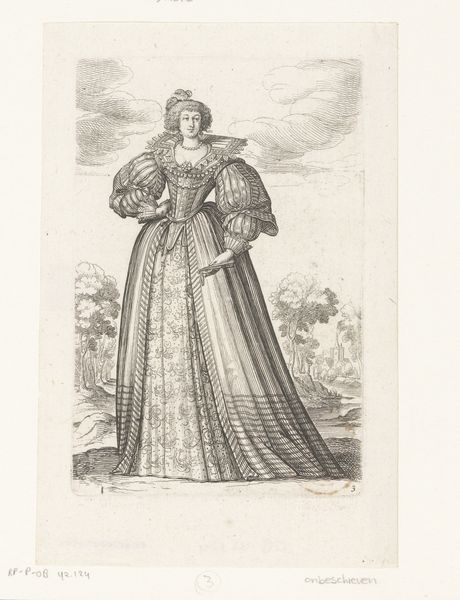
print, engraving
#
portrait
#
baroque
# print
#
figuration
#
dress
#
engraving
Dimensions: height 161 mm, width 110 mm
Copyright: Rijks Museum: Open Domain
Editor: So here we have, “Fashion and Elegance: French Fashions of the 1720s,” a print from 1725 by François Octavien. It features a woman in an elaborate dress, seen from the back. The dress dominates the composition and creates such an interesting, almost imposing silhouette. How do you interpret this piece? Curator: This engraving provides valuable insight into the culture of 18th-century France and the socio-political importance of fashion. These fashion plates weren’t just innocent illustrations; they were carefully constructed representations of status and power. Editor: Power, really? I wouldn’t have thought about it that way. Curator: Absolutely. Think about who this image was likely created for. Fashion plates like these were circulated amongst the elite. This print broadcasts French taste and arguably, superiority at a time of intense competition between European nations. Can you imagine how influential it would be if these fashion ideals reached the right people, therefore furthering the fashion and material culture industry? Editor: That makes so much sense! So it’s not just a pretty dress; it’s a statement. Curator: Precisely. And the choice of engraving is significant too, enabling mass production and wider distribution of the "French style" than other available methods at the time. These weren’t passive images; they were tools of cultural influence. The composition places her near a natural element which contrasts with her grand gown; do you notice what else? Editor: I see a little bit of a headpiece, too! Is that how they advertised what women wore back then? Curator: You are right on track. Before the rise of fashion magazines, prints were a primary means for disseminating fashion trends and setting standards of what was considered elegant. We’re not just looking at fashion here, but the beginnings of a global fashion industry. Editor: I never considered fashion as a political tool, this really opens my eyes. Curator: It’s a reminder that art always exists within a social and political context.
Comments
rijksmuseum about 2 years ago
⋮
During the early 18th century small series of costume plates reported on the fashion of the day. Women wore the loose-fitting robe volante, also called a ‘sack-backed gown’ in English, over which women sometimes added a short, hooded cloak known as a bagnolette. Men dressed in long coats over a waistcoat and knee-breeches. Pig-tail wigs were adorned with large bows, and tricorne hats were tucked under the arm rather than worn on the head. The two large prints from around 1760 show Parisians out for a stroll. Curiously, the women wear wide paniers (hoop skirts) for their promenade on the ramparts. In the caption underneath, they are condemned as silly slaves of fashion who blindly follow the dictates of the latest trends.
Join the conversation
Join millions of artists and users on Artera today and experience the ultimate creative platform.
